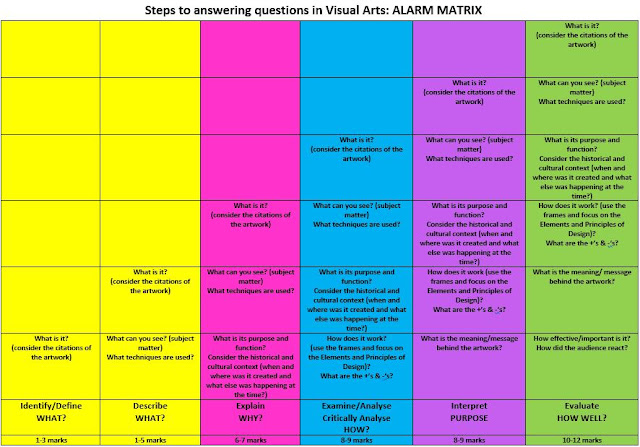Careers in Art
I've been teaching my junior classes about the four frames, conceptual framework and art practice. Today, I decided to talk about 'careers' in art and why art is important in our everyday lives. Art is in the clothes that they wear, the gadgets that they play with, the furniture that they sit on and even the signs on the road.
We spent time looking at the Australian Government art careers chart. The chart divides the art professions into four levels. We looked at how some of these professions required a university degree, such as being an art teacher. I also spoke about how some jobs have died down especially more traditional forms of art making. At the same time, there are new avenues for artists. Today's lesson helped students consider what they may want to do after school, why certain art professions require Tafe certificates or university degrees. We also acknowledged that it is not always necessary to do further studies in art but the main importance was to practice making each day and to consider the technical resolution and conceptual strength on the piece of work that they are creating.
I explained to students that most workplaces are now looking for 'creativity' and 'problem-solving' skills in their employees. They do not want rope learners that regurgitate material. The class was quite excited to share what they wanted to do after school and I opened the conversation to any careers that they may want to explore.
Usual training requirements:
Level 1: Usually has a skill level equal to the completion of Year 10, the Senior Secondary Certificate of Education, Certificate I or Certificate II qualification. Australian Apprenticeships may be offered at this level.
Level 2 Usually has a skill level equal to a Certificate III or IV or at least three years relevant experience. Australian Apprenticeships may be offered at this level.
Level 3 Usually requires a level of skill equal to a Diploma or Advanced Diploma. Study is often undertaken through TAFEs or Registered Training Organisations. Some universities offer studies at this level.
Level 4 Usually requires the completion of a Bachelor Degree or higher qualification. Study is often undertaken at university. This chart shows a selection of jobs that have some relation to the subject of ART.
The four education and training levels are to be used as a guide only. These levels indicate the most common education and/or entry requirements for these jobs. For further information visit www.jobguide.education.gov.au and www.myfuture.edu.au





Comments
Post a Comment